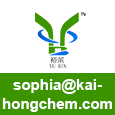Products Categories
| CAS No.: | 84-51-5 |
|---|---|
| Name: | 2-Ethyl anthraquinone |
| Article Data: | 37 |
| Molecular Structure: | |
|
|
|
| Formula: | C16H12O2 |
| Molecular Weight: | 236.27 |
| Synonyms: | Anthraquinone,2-ethyl- (7CI,8CI);2-Ethyl-9,10-anthraquinone;Kayacure2-EAQ;NSC 7216;b-Ethylanthraquinone;2-Ethyl Anthraquinone; |
| EINECS: | 201-535-4 |
| Density: | 1.231 g/cm3 |
| Melting Point: | 108-111 °C(lit.) |
| Boiling Point: | 415.4 °C at 760 mmHg |
| Flash Point: | 155.4 °C |
| Solubility: | Insoluble in water. |
| Appearance: | white or yellowish crystals or powder |
| Hazard Symbols: |
 Xn Xn
|
| Risk Codes: | 22-36/37/38 |
| Safety: | 24/25-36-26 |
| PSA: | 34.14000 |
| LogP: | 3.02440 |
- 852475-26-4MC1568
- 958254-66-51H-Imidazo[4,5-b]pyridine-2-carboxaldehyde, 1-methyl-, hydrochloride
- 99170-93-1N-Methyl-2-oxazolamine
- 914458-26-7[5-(2-fluorophenyl)-1-pentyl-1H-pyrrol-3-yl]-1-naphthalenyl-Methanone
- 894852-01-87-BROMO-2,2-DIMETHYL-2H-PYRIDO[3,2-B][1,4]OXAZIN-3(4H)-ONE
- 90221-55-92-bromo-5-methylbenzaldehyde
- 885590-99-82,3-DIFLUORO-4-IODOBENZALDEHYDE
- 97730-31-9(S)-4'-(2-Methylbutyl)Biphenyl-4-Carbonitrile
- 926293-55-26-Bromo-2-methylpyridine-3-carboxaldehyde
- 911112-05-55-Iodo-3-(trifluoromethyl)-2-pyridinamine
- 84517-95-3Germaben II
- 845291-51-22-Carbamimidoylpyridine 1-oxide hydrochloride
- 84-54-82-Methyl anthraquinone
- 845745-37-1L-Prolinamide, N-methyl-L-alanyl-3-methyl-L-valyl-N-[(1R)-1,2,3,4-tetrahydro-1-naphthalenyl]- (9CI)
- 845781-07-93,4-Difluoro-3',4'-dimethoxybenzophenone
- 845781-35-35-(4-Fluorophenyl)-3-methyl-5-oxovaleric acid
- 845781-36-43-Methyl-5-(3-methylphenyl)-5-oxovaleric acid
- 845781-38-65-(3,4-Dichlorophenyl)-3-methyl-5-oxovaleric acid
- 104987-11-3Tacrolimus
- 141-53-7Sodium formate
- 8001-54-5Quaternary ammonium compounds, alkylbenzyldimethyl, chlorides
- 9003-39-8Povidone
- 10161-34-9Trenbolone acetate
- 402957-28-2Telaprevir
- 68-19-9Cyanocobalamin
Standards and Recommendations
Specification
The 2-Ethyl Anthraquinone, with the CAS registry number 84-51-5, is also known as beta-Ethylanthraquinone. It belongs to the product categories of Intermediates of Dyes and Pigments; Organics; Anthraquinones; Chloroanthraquine, etc.; Functional Materials; Photopolymerization Initiators; Photoluminescent Materials > Light-Emitting Dopants and Fluorescent Dyes; Photonic and Optical Materials. Its EINECS registry number is 201-535-4. This chemical's molecular formula is C16H12O2 and molecular weight is 236.27. Its IUPAC name is called 2-ethylanthracene-9,10-dione. This chemical is white or yellowish crystals or powder. What's more, you should keep it airproof in dry and cool place and keep away from light.
Physical properties of 2-Ethyl Anthraquinone: (1)ACD/LogP: 4.38; (2)# of Rule of 5 Violations: 0; (3)ACD/LogD (pH 5.5): 4.38; (4)ACD/LogD (pH 7.4): 4.38; (5)ACD/BCF (pH 5.5): 1246.07; (6)ACD/BCF (pH 7.4): 1246.07; (7)ACD/KOC (pH 5.5): 5719.9; (8)ACD/KOC (pH 7.4): 5719.9; (9)#H bond acceptors: 2; (10)#H bond donors: 0; (11)#Freely Rotating Bonds: 1; (12)Index of Refraction: 1.629; (13)Molar Refractivity: 68.21 cm3; (14)Molar Volume: 191.8 cm3; (15)Surface Tension: 51.1 dyne/cm; (16)Density: 1.231 g/cm3; (17)Melting Point: 108-111 °C(lit.); (18)Flash Point: 155.4 °C; (19)Enthalpy of Vaporization: 66.85 kJ/mol; (20)Boiling Point: 415.4 °C at 760 mmHg; (21)Vapour Pressure: 4.14E-07 mmHg at 25°C.
Preparation: this chemical can be prepared by 2-ethyl-9,10-dimethoxyanthracene. This reaction will need reagent phenyliodine(III) bis(trifluoroacetate) and solvent H2O, methanol. The reaction time is 6 hours with reaction temperature of 20 ℃. The yield is about 97%.
.png)
Uses of 2-Ethyl Anthraquinone: This chemical can be used to produce hydrogen peroxide in industries and also can be used as dye intermediates, light-cured resin catalyst, photodegradation membrane, coatings and photosensitive polymerization initiator.
When you are using this chemical, please be cautious about it as the following:
This chemical may cause damage to health. It is harmful if swallowed. In addition, it is irritating to eyes, respiratory system and skin. You should avoid contacting it with skin and eyes. In case of contact with eyes, you should rinse immediately with plenty of water and seek medical advice. Whenever you will contact it, please wear suitable protective clothing.
You can still convert the following datas into molecular structure:
(1)Canonical SMILES: CCC1=CC2=C(C=C1)C(=O)C3=CC=CC=C3C2=O
(2)InChI: InChI=1S/C16H12O2/c1-2-10-7-8-13-14(9-10)16(18)12-6-4-3-5-11(12)15(13)17/h3-9H,2H2,1H3
(3)InChIKey: SJEBAWHUJDUKQK-UHFFFAOYSA-N
The toxicity data is as follows:
| Organism | Test Type | Route | Reported Dose (Normalized Dose) | Effect | Source |
|---|---|---|---|---|---|
| mouse | LD50 | intraperitoneal | 200mg/kg (200mg/kg) | National Technical Information Service. Vol. AD277-689, | |
| rabbit | LD50 | skin | > 20gm/kg (20000mg/kg) | National Technical Information Service. Vol. OTS0534314, | |
| rat | LD50 | oral | 2795mg/kg (2795mg/kg) | BEHAVIORAL: SOMNOLENCE (GENERAL DEPRESSED ACTIVITY) | National Technical Information Service. Vol. OTS0534314, |
-
Premium Related Products



